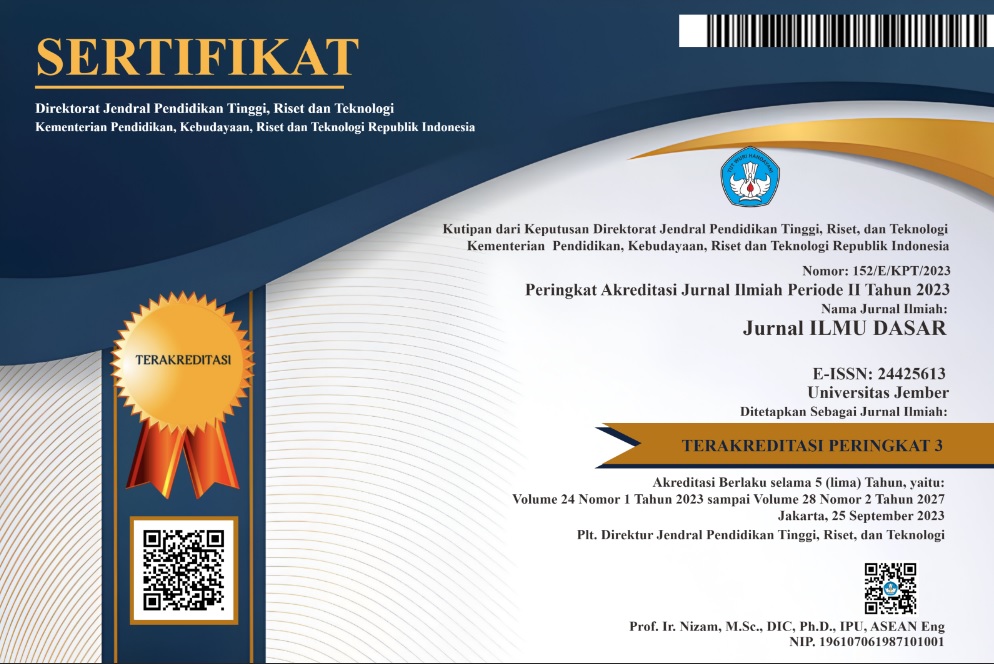Effect of Red Dragon Fruit Extract as Dye in Solar Cells
DOI:
https://doi.org/10.19184/jid.v21i1.10922Abstract
Along with the development of nanotechnology, the development of solar cells entered a significant stage with the emergence of the newest generation, namely DSSC (Dye Sensitized Solar Cell). The utilization of dragon fruit skin which has been extracted as dye in dye sensitized solar cells and solar cell development to realize sustainable energy supply is the main target in this study. The method carried out begins with the synthesis of nanoparticles from organic material (TiO2), to obtain good TiO2 material as an anti-reflection, where anti-reflection is selected on DSSC technology to reduce light reflection in the visible light region. The crystal size of TiO2 was analyzed as an oxide layer material in DSSC. DSSC synthesis was carried out and the parameters of organic solar cell devices (DSSC) were optimized to obtain solar cells with good conversion efficiency. The results showed that the size of TiO2 obtained was an average of 0.211 nm and the maximum wavelength value of the extract of the dragon fruit dye solution was 530 nm.
Keywords: dye, solar cell, DSSC, TiO2.
Downloads
References
Dahlan, D. 2014. Pengaruh Beberapa Jenis Dye Organik Terhadap Efisiensi Sel Surya Dye Sensitized Solar Cell. Jurnal Sains Materi Indonesia, 15(2): 74-79.
Ekasari, V. 2013. Fabrikasi Dssc dengan Dye Ekstrak Jahe Merah (Zingiber Offinale Linn Var. Rubrum) Variasi Larutan TiO2 Nanopartikel Berfase Anatase dengan Teknik Pelapisan. Jurnal Sains dan Seni Pomits 2(1): 2337-3520.
Gratzel, M. 2003. Dye Sensitized Solar Cells, Journal of Photochemistry and Photobiology C. Photochemistry reviews. 4: 145-153.
Johnev, B., Vogel, M., Fostiropoulos, K., Mertesacker, B., Rusu, M., Lux-Steiner, M.-C., Weidinger, A. 2005. Monolayer Passivation of the Transparent Electrode in Organic Solar Cells. Thin Solid Films. 488. 270-273.
Nadeak, S. 2012. Variasi Temperatur dan Waktu Tahana Kalsinasi terhadap Unjuk Kerja Semikonduktor TiO2 sebagai Dye Sensitized Solar Cell (DSSC) dengan Dye dari Ekstrak Buah Naga Merah. Jurnal Teknik ITS 1(1): 2301-9271.
Schauer, F. 2005. Space-charge-limited. Currents for Organic Solar Cells Optimisation, Solar Energy Mater. & Solar Cells 87: 235-250.
Smestad GP. 1998. Education and Solar Conversion: Demonstrating Electron Transfer. Solar Energy Materials and Solar Cells. 55: 157-178.








